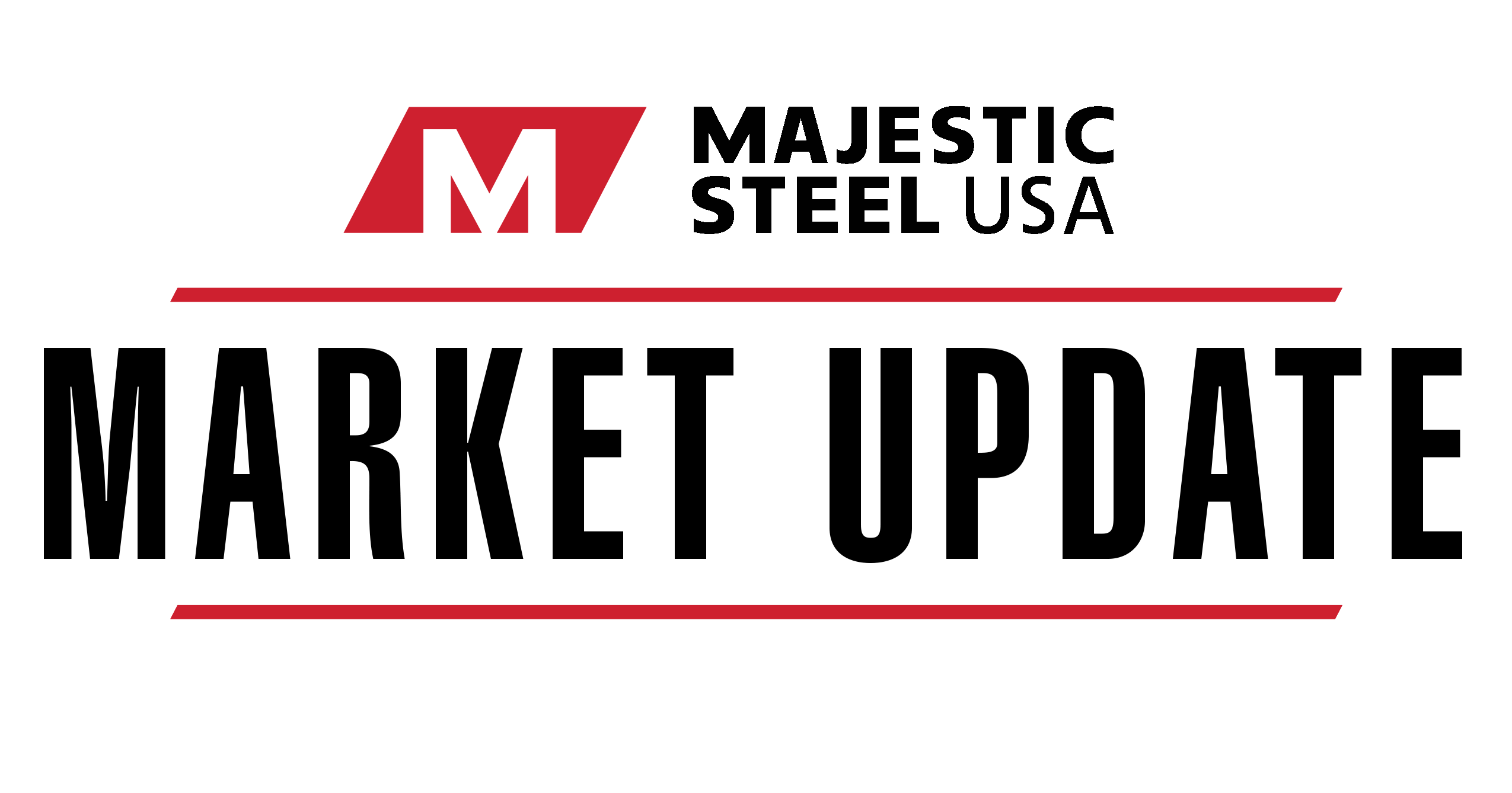Market Update | September 25, 2024
DEMAND UPSIDE REMAINS FOR INFRASTRUCTURE INVESTMENT AND JOBS ACT FUNDS
A recent report by the Department of Transportation noted that after nearly three years into the five-year law, 40% of Infrastructure Investment and Jobs Act funds have been announced, indicating that potential upside to demand remains. Much of the law’s funding is available until expended, so it is expected to fuel construction projects past the five-year period. However, other funds are appropriated in specified amounts for specified fiscal years from 2022 to 2026. Former President Donald Trump has indicated he would defund some initiatives, such as clean energy programs, if he’s elected. The recent report showed that over 60,000 construction projects are advancing with IIJA money.
PRICE
Domestic flat-rolled product pricing moved higher this week but remains in a tight range.
- The trade cases, stronger scrap pricing, leaner service center inventory, and upcoming mill outages are still providing upward momentum to pricing.
Input Costs
Zinc pricing rebounded sharply for the second consecutive week.
- Zinc pricing climbed to $1.37/lb this week, now above the 10-day and 30-day averages.
Spot iron ore pricing rebounded again this week, climbing to $100/mt from $95/mt previously.
- Iron ore pricing is now back to $100/mt for the first time in nearly a month.
- The boost this week was driven by China’s larger-than-expected stimulus announcements this week, which included plans to cut mortgage rates, reduced downpayment requirements on second homes, and an increase in its contribution to property inventory purchases via re-lending – all of which should support Chinese construction
Coking coal pricing rebounded slightly this week, climbing to $185/mt.
- This is up 2.8% from last week’s pricing but is still down 6.8% from this time last month.
- Prices continued to be weighed down by tepid buying interest as demand from India reportedly is still sluggish due to adverse weather conditions.
SUPPLY
U.S. raw steel production declined further last week, now down for the second straight week.
- U.S. steelmakers produced 1.707 million tons at a 76.9% utilization rate, the lowest weekly output July 4th holiday.
- Production was down 2.4% from the prior week but up 0.9% from the same week last year.
- YTD production is down 1.6% from the same timeframe last year.
Global steel production declined again in August, now down for the second consecutive month.
- Production came in at a 4.672 million mt/day rate, down 4.9% from July and down 6.5% from the 4.998 million mt/day rate in August 2023.
- This was the lowest monthly production rate since December.
- Chinese production led the decline, sliding 6.1% from July and a sharp 10.4% from August 2023.
- The 2.514 million mt/day rate in August was the lowest non-December rate since November 2022.
- Production from the rest of the world came in at a 2.159 million mt/day rate, down 3.5% from July and now down for the fourth consecutive month.
DEMAND
A recent report by the Department of Transportation noted that after nearly three years into the five-year law, 40% of Infrastructure Investment and Jobs Act funds have been announced, indicating that potential upside to demand remains.
- Much of the law’s funding is available until expended, so it is expected to fuel construction projects past the five-year period.
- However, other funds are appropriated in specified amounts for specified fiscal years from 2022 to 2026.
- Former President Donald Trump has indicated he would defund some initiatives, such as clean energy programs, if he’s elected.
- The recent report showed that over 60,000 construction projects are advancing with IIJA money.
Applications to refinance a home loan surged 20% last week compared with the previous week.
- This was helped by the average contract interest rate for 30-year fixed-rate mortgages with conforming loan balances ($766,550 or less) decreased to 6.13% from 6.15%
- The refinance share of applications rose to 55.7%.
- Mortgage applications to purchase a home rose just 1% for the week and were 2% higher than the same week one year ago.
After climbing the previous two months, new home sales slipped in August.
- New home sales came in at a 716,000-unit rate, down 4.7% from July but was up 9.8% from the 652,000-unit rate last year.
- New home sales have now increased, on a year-over-year basis, for the third consecutive month.
- Year-to-date actual sales are now up 4.0% compared to the same timeframe last year.
- The inventory of unsold new homes increased to 470,000 units, the highest month-end level since October 2022.
- The current inventory, when combined with August’s sales rate, equates to 8.2 months of supply.
ECONOMIC
Confidence among U.S. consumers slipped in September, sliding to 98.7.
- This is down from the upwardly revised 105.6 reading in August and the largest drop in three years.
- The assessment of the current situation declined by more than 10 points, sliding to 124.3.
- The short-term outlook declined to 81.7, down from 86.1 in August.
- Despite the decline, the expectations index remained above 80, a key threshold of 80 signals a recession.
- Consumers buying plans for big-ticket appliances were mixed and plans to buy a smartphone or laptop/PC in the next six months eased.
- However, on a six-month moving average, purchasing plans for homes and cars improved slightly.
This material, information and analyses (the “Content”) may include certain statements, estimates and projections prepared with respect to, among other things, historical data and anticipated performance. Content may reflect various assumptions by Majestic Steel USA, Inc. concerning anticipated results that are inherently subject to significant economic, competitive and other uncertainties and contingencies and have been included for illustrative purposes. Content is provided AS-IS.

